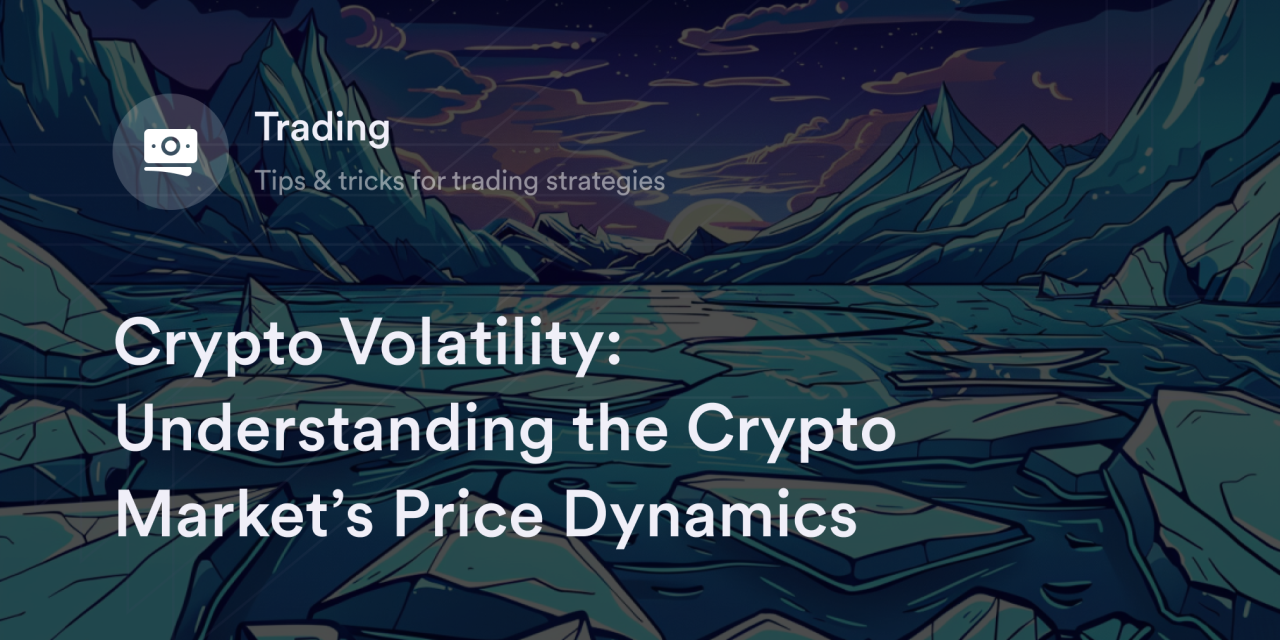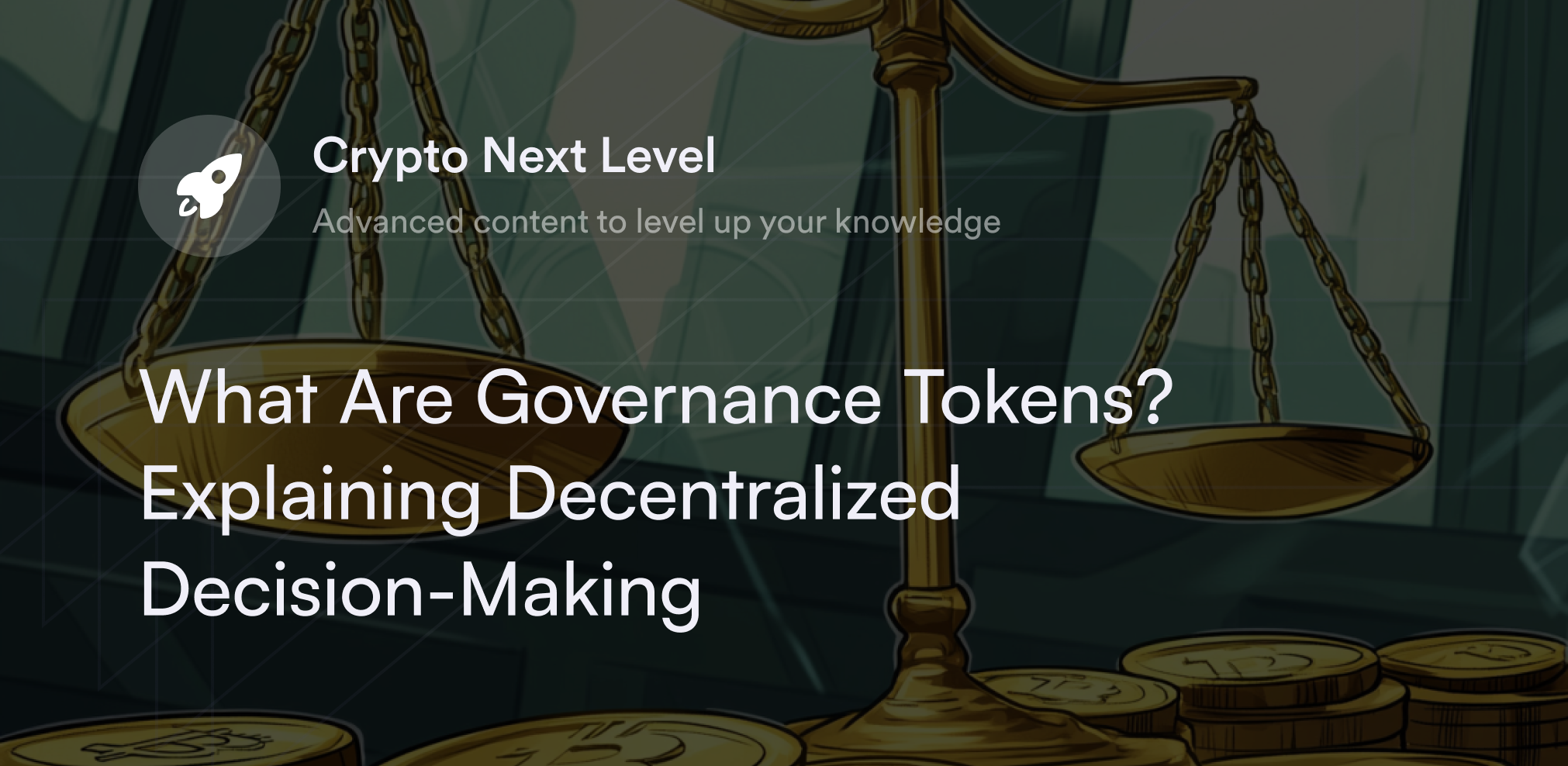


Predicting the price of cryptocurrencies Bitcoin (BTC) is like shooting an arrow in the dark, even for skilled crypto traders. Because parabolic rallies and 50% plunges are increasingly common in the fast-paced crypto market, timing trades can be notoriously difficult.
For instance, after Bitcoin peaked at nearly $65,000 per coin in 2021, it dropped to sub-$20,000 within one year. And other cryptocurrencies (aka altcoins) like Ethereum (ETH), Solana (SOL), and Dogecoin (DOGE) are just as—if not more—susceptible to wild price swings.
While these dramatic movements give traders ample opportunities, they also ramp up the risk profile for crypto assets. For maximum profitability (not to mention peace of mind), crypto traders are often on the hunt for techniques to manage the spikes and dips in their portfolios.
If you’re new to the crypto ecosystem, learning the ins and outs of price volatility in crypto will help you mentally prepare for market fluctuations and set your risk tolerance. A better understanding of crypto volatility will also enable you to develop actionable strategies to weather stormy conditions.
What Does Volatility Mean in Crypto?
Volatility in the crypto market measures the average changes in the value of digital assets like Bitcoin and Ethereum. When financial analysts say a cryptocurrency is “more volatile” than other assets, they mean it tends to experience wider and more frequent price swings than “less volatile” coins or tokens.
Since volatility increases the odds of unexpected and dramatic price changes, more volatile digital assets have the highest risk profile in the crypto space. Although the most volatile cryptocurrencies have a greater chance of failing or performing worse than more established projects like Bitcoin, they also possess the potential to generate significant gains during pleasant market conditions (aka bull runs).
Measuring volatility isn’t an exact science, but traders typically use the historical price trends and average percentage fluctuations to get a feel for a cryptocurrency’s risk profile. After studying the standard price deviations, traders compare and contrast these percentages to see which cryptocurrencies have the highest volatility.
Another way traders assess a crypto’s volatility is via volume bar charts, which measure how many people trade a crypto asset in a trading session. Unusual spikes in volume often correlate with more volatile price dynamics as more people rush to buy or sell a cryptocurrency.
Finally, indexes like the Crypto Volatility Index (CVI) also monitor the average price changes in the crypto market and quantify these fluctuations in an easy-to-scan graph.
Why is Crypto so Volatile?
Although the average volatility for Bitcoin has decreased in recent years, one of the defining characteristics of all cryptocurrencies is their sharp and sudden price changes. Not everyone agrees on the primary reason crypto is so volatile, but there are a few common suggestions.
There’s a new asset category: Bitcoin didn’t go live until 2009, and altcoins have even shorter histories in the crypto market. Since cryptocurrencies are such a novel phenomenon and lack multi-decade price data, it’s more difficult for traders to gauge the “fair” value for virtual assets, which may increase the odds of emotion-based price speculation.
Overall market cap is comparatively low: Although the cryptocurrency market surpassed the $1 trillion mark in 2021, it’s a relatively small slice of the global financial sector. The smaller size of the crypto market means it takes less money to significantly move the prices of digital currencies.
Nothing backs the value of virtual coins and tokens: Often, there’s nothing tangible like precious metals or government bonds backing a digital asset’s value. Cryptocurrencies like Bitcoin are only worth as much as people are willing to pay to join the network, which makes it trickier to guess the value of different crypto projects.
No centralized authority is responsible: Governments, banks, and companies sometimes influence the prices of cryptocurrencies, but they can’t directly control these assets. Since the crypto market isn’t as regulated as centrally controlled assets, there’s less restraint on trading activity, potentially contributing to price instability.
Social media strongly influences crypto prices: Social media sites like X (formerly Twitter) and Discord influence crypto culture and sometimes trigger irrational trading activity. Online crypto influencers occasionally stir up fear or greed with news and rumors, leading some emotion-based traders to panic buy or sell their digital assets.
How do Traders Handle Volatility in Cryptocurrency?
The simplest way crypto traders drown the noise of day-to-day price fluctuations is to hold their favorite cryptocurrencies in a private wallet and wait. Known as the HODL method, this popular strategy bets that digital asset prices continue to rise over a multiyear period.
While HODL is one of the trendiest strategies for crypto traders, it’s only suitable if traders prefer a passive approach and have a long time horizon. For traders interested in a more active approach to portfolio management, there are a few other ways to reduce volatility.
Diversification
When crypto traders diversify their portfolios, they buy multiple digital assets with different risk profiles rather than concentrating all their funds into one cryptocurrency. For example, some traders buy Bitcoin to take advantage of its relative stability versus more speculative altcoins. Mixing established cryptocurrencies with higher-risk projects in different segments of the crypto industry helps traders mitigate the overall price volatility of their holdings.
Dollar-cost averaging (DCA)
The DCA strategy means buying small amounts of cryptocurrencies over a long period rather than buying an entire position from the start (aka lump-sum investing).
Some DCA traders buy crypto at preset intervals (e.g., once a week), while others only buy when their preferred coin or token drops by a certain percentage to take advantage of discounts. Either way, DCA aims to lower the average purchase price per cryptocurrency over time, which means crypto prices don’t need to rise as high for traders to turn a profit.
Hedging Cryptocurrencies
Hedging involves opening a trade in a cryptocurrency contrary to a trader’s current position. For example, if you hold a lot of Cardano (ADA) but fear a near-term price decline, you can bet against ADA with trading instruments like put options, futures, or crypto perpetual contracts. This means even if ADA drops in value, you’ll still profit from your negative position, decreasing your total loss.
How Does Leverage in Crypto Impact Volatility?
Simply put, leverage raises a trader’s risk profile. While there are debates over how much it impacts the average price fluctuations of crypto assets, there’s no denying it does.
When a crypto exchange offers leverage, it allows traders to increase their position size––often with borrowed funds. For instance, if a trader has $2,000 in their trading account and the exchange offers 2x leverage, they have $4,000 worth of buying power. This gives a trader quick access to capital and increases your potential gains by 2x, provided the trader is on the right side of the trade.
On the downside, traders who use leverage risk losing all their money (aka liquidation) if a cryptocurrency doesn’t move in the direction they predicted. While the 2x leverage boosts a trader’s gains, it also increases losses by a factor of two––meaning a cryptocurrency doesn’t have to fall to zero for a trader to lose all their money.
All in all, since leverage increases the volatility of crypto assets, traders should carefully consider the risks of this method and use strategies like stop-loss orders to avoid liquidation.
Eligible Traders can Manage Crypto Volatility with dYdX Perpetuals
dYdX equips eligible traders with the tools to navigate the crypto market’s volatility. After linking a wallet to dYdX’s decentralized exchange, an eligible trader can enjoy access to dozens of perpetual contracts with slippage tolerance controls, stop-loss orders, and the option to add leverage. For more details on dYdX’s latest upgrades and offerings, head to our official blog for up-to-date news.
dYdX also has more pro tips on trading and transferring cryptocurrencies on dYdX Academy. Whether you want to know more about bear market or meme coin Dogecoin, swing by our library and learn all things crypto, and eligible traders can start trading on dYdX today.
Disclaimer
The content of this article (the “Article”) is provided for general informational purposes only. Reference to any specific strategy, technique, product, service, or entity does not constitute an endorsement or recommendation by dYdX Trading Inc., or any affiliate, agent, or representative thereof (“dYdX”). Use of strategies, techniques, products or services referenced in this Article may involve material risks, including the risk of financial losses arising from the volatility, operational loss, or nonconsensual liquidation of digital assets. The content of this Article does not constitute, and should not be considered, construed, or relied upon as, financial advice, legal advice, tax advice, investment advice, or advice of any other nature; and the content of this Article is not an offer, solicitation or call to action to make any investment, or purchase any crypto asset, of any kind. dYdX makes no representation, assurance or guarantee as to the accuracy, completeness, timeliness, suitability, or validity of any information in this Article or any third-party website that may be linked to it. You are solely responsible for conducting independent research, performing due diligence, and/or seeking advice from a professional advisor prior to taking any financial, tax, legal, or investment action.
You may only use the dYdX Services in compliance with the dYdX Terms of Use available here, including the geographic restrictions therein.
Any applicable sponsorship in connection with this Article will be disclosed, and any reference to a sponsor in this Article is for disclosure purposes, or informational in nature, and in any event is not a call to action to make an investment, acquire a service or product, or purchase crypto assets. This Article does not offer the purchase or sale of any financial instruments or related services.
By accessing this Article and taking any action in connection with the information contained in this Article, you agree that dYdX is not responsible, directly or indirectly, for any errors, omissions, or delays related to this Article, or any damage, injury, or loss incurred in connection with use of or reliance on the content of this Article, including any specific strategy, technique, product, service, or entity that may be referenced in the Article.






